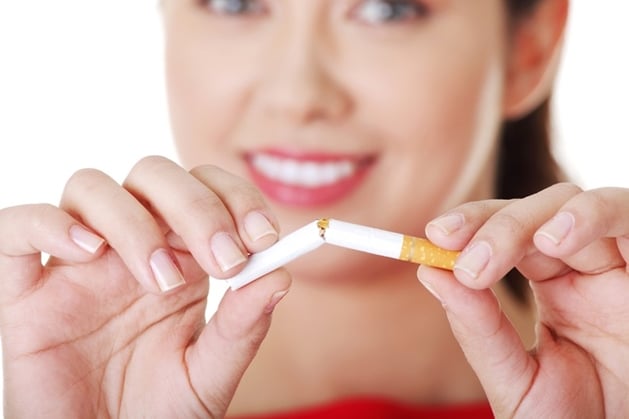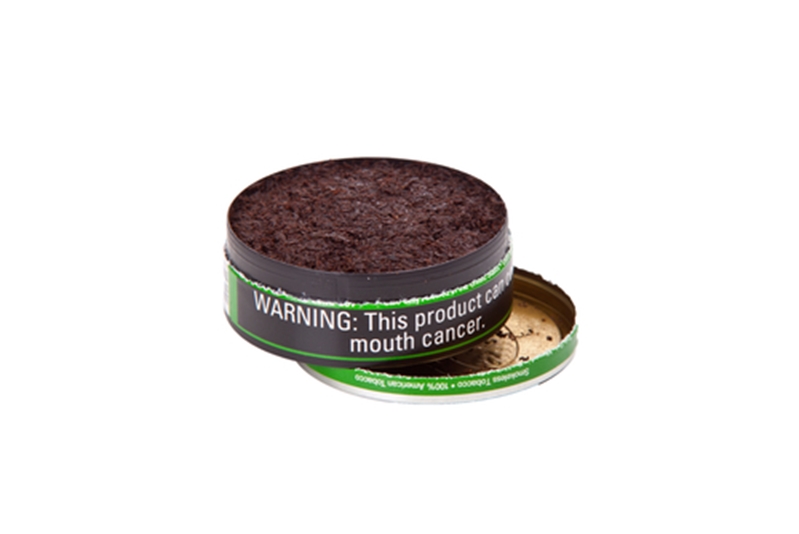
The World Health Organization recognizes World No Tobacco Day (WNTD) on May 31, which calls for an end to the illicit trade of tobacco products.1 This day focuses on combating the illicit use of tobacco on a global level, highlighting the negative economic, social and health effects it has. Though the use of tobacco is legal in the U.S. for individuals over the age of 18 in most states, it's still used illicitly by minors, posing a major health concern for the entire population. In fact, smoking is the leading cause of preventable deaths, resulting in approximately 480,000 deaths in the U.S. annually.2 That number includes the 41,000 people affected by secondhand smoke. In addition to overall health problems, tobacco use poses a major oral health risk.
Cigarettes and your gums
Not only does a smoking habit have the potential to cause serious health issues such as lung cancer and heart disease, but it wreaks havoc on your oral hygiene. Bad breath, stained teeth and mouth sores are some of the problematic, but less serious issues smoking causes. An even more concerning scenario is that a smoker is two times more likely to develop gum disease than a nonsmoker, which can pose a threat to overall health.3 Additionally, the number of cigarettes someone smokes and the length of time the habit continues can increase a smoker's risk for serious dental health issues. Not only do cigarettes serve as a cause of mouth infections, but they can also prevent your body from properly healing itself because tobacco weakens your immune system.
"A smoker is two times more likely to develop gum disease than a nonsmoker."
Gingivitis, the first stage of gum disease, is marked by red, sore and irritated gums. Though gum disease is curable at this stage, the infection can easily transition into periodontitis if not taken care of with proper oral hygiene care and a visit to the dentist. Additionally, a continued smoking habit will make it worse.
With periodontitis, the gums begin to detach from the teeth, leaving small pockets in the gum line where plaque and infection can grow.4 At this point, not only is the damage irreversible, but the damage done to your supporting fibers and bone that keep your teeth in place could cause your teeth to become loose. It is not uncommon for victims of periodontitis to either lose teeth or have them pulled by a dentist.
Smokeless tobacco
Just like cigarettes, smokeless tobacco can also cause bad breath and stained teeth. Staining means that even with adequate brushing, your teeth will likely remain yellow. However, gum diseases raise the biggest concern when it comes to oral health.
People often mistakenly think smokeless tobacco is safe, but that is far from the truth. It can cause serious harm to your gums. In fact, the use of dip and chew can actually cause the gum to pull away from the tooth. No matter how the gum recedes, whether naturally with age, brushing too hard or tobacco use, it won't grow back. Since your gums are already in danger just from time, tobacco use is even riskier.
Gum recession exposes the part of the tooth root that is not protected with enamel. Smokeless tobacco, which is usually placed right between the inside of the lower lip and bottom teeth, hits a spot that can easily experience a receded gum line. The sugar in smokeless can cause decay in the exposed tooth root, leading to cavities and tooth loss.
 Smokeless tobacco can be just as bad for your gums as cigarettes.
Smokeless tobacco can be just as bad for your gums as cigarettes.When gum disease gets worse
Even though gum disease may start in the mouth with a smoking habit, it doesn't stay put for long. Periodontitis is an infection, and it can easily spread to the rest of the body. Additionally, existing health problems can cause gum disease or be made worse by it. Infections in the mouth have been linked with diabetes, heart disease and osteoporosis among other chronic illnesses.5
Spotting and combating gum disease
If you're a smoker, there's a high chance that you already have the first stage of gum disease. If your gums bleed after flossing, or you notice a small amount of blood in the sink after brushing your teeth, you may have gingivitis. Other symptoms include red, sore and puffy gums, constant bad breath (though that could also be from smoking) and a difference in the way your teeth align. Gum recession is another sign that you may be developing gum disease, and this can be visually apparent. Just check around the base of your bottom teeth and the top of your upper ones. If your teeth seems more exposed than they used to be, then you should talk to your dentist.
The only way to combat gum disease is to brush twice daily, floss regularly, visit your dentist twice a year and kick the smoking habit.
1. "World No Tobacco Day 2015; Stop illicit trade of tobacco products," World Health Organization. http://www.who.int/campaigns/no-tobacco-day/2015/event/en/
2. "The Health Consequences of Smoking - 50 Years of Progress: A Report of the Surgeon General," U.S. Department of Health and Human Services. Atlanta: U.S. Department of Health and Human Services, Centers for Disease Control and Prevention, National Center for Chronic Disease Prevention and Health Promotion, Office on Smoking and Health, 2014. http://www.cdc.gov/tobacco/data_statistics/sgr/50th-anniversary/index.htm
3. "Prevalence of Periodontitis in Adults in the United States: 2009 to 2010," P.I. Eke, et. al., Journal of Dental Research, August, 30, 2012. http://jdr.sagepub.com/content/91/10/914
4. "What are the Stages of Gum Disease?" Colgate. http://www.colgate.com/app/CP/US/EN/OC/Information/Articles/Oral-and-Dental-Health-Basics/Common-Concerns/Gum-Disease/article/What-are-the-Stages-of-Gum-Disease.cvsp
5. "Periodontal Disease and Systemic Health," American Academy of Periodontology. http://www.perio.org/consumer/other-diseases
